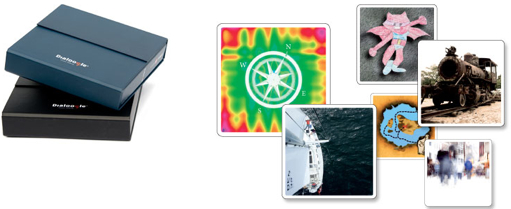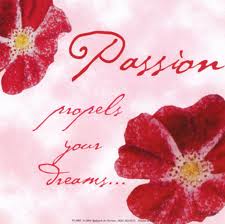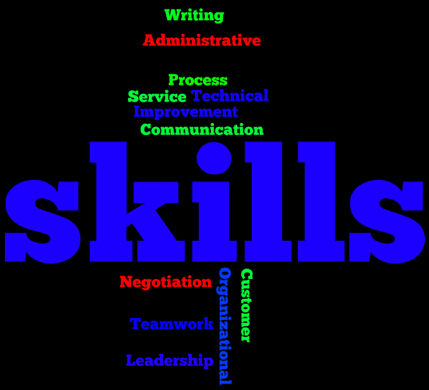While poking around my iPad, it occurred to me to search Apple’s App Store for apps related to story and storytelling, so I used those two search terms to see what’s out there. This listing isn’t intended to be comprehensive, and I would certainly love to hear of other great story-related apps.
I focused on iPad rather than iPhone apps because I have an iPad and not an iPhone. Even when not designated as being an iPad app, most iPhone apps, I’ve found, can be used on an iPad; they just aren’t optimized for the size of the iPad’s screen. For example, Eric James Wolf’s Art of Storytelling podcast app is ostensibly available only for iPhone, but it can be used on an iPad if you don’t mind its small screen image floating on the larger iPad screen.
The vast majority of results that come up when searching apps for “story” are stories or storybooks for children. Here are some that are not:
Story-prompt and brainstorming tools:
Storyteller HD helps users write that next story, that next page, or that next sentence, offering “thousands of character ideas, plot suggestions, location ideas and themes. Whether the hero is an insecure bodyguard obsessed with his own mortality or the suspect a vigilante father avenging his daughter’s kidnapping, Storyteller is sure to surprise you with intriguing and original ideas for your stories. There’s no need to ever fear writer’s block again!” $1.99
Story Tiles (sorry, can’t find a link for iPad version) enables users to arrange random word tiles into fun and interesting phrases, providing more than 13,000 random words and millions of phrase possibilities. $2.99
Stories and collections of stories to read:
The Narrative App brings Narrative Magazine to the iPad, iPhone, and iPod Touch and places the magazine’s entire library at your fingertips, for free. Narrative Magazine, named “the gold standard in online literary magazines,” is the leading publisher of first-rank fiction, poetry, and nonfiction. A nonprofit organization, Narrative is dedicated to advancing the literary arts in the digital age by supporting the finest writing talent and encouraging readership around the world. Read stories from award-winning authors such as Sherman Alexie, Rick Bass, Ann Beattie, T. C. Boyle, Robert Olen Butler, E. L. Doctorow, Gail Godwin, Jim Harrison, Jhumpa Lahiri, Joyce Carol Oates, and James Salter.” Free.
SpiritRenew provides content for spiritual development and growth. Content includes short stories and inspirational articles.
301+ Short Stories for iPad offers 315 stories by more than 90 authors (with more on the way) in these and more genres: adventure , humor , ghost stories, horror, mystery , westerns , fantasy , romance and love , and sketches of life . 99 cents.
Created to keep literature vital in the digital age, Electric Lit features video-enhanced stories by great contemporary authors like Michael Cunningham (The Hours), Rick Moody (The Ice Storm), MacArthur “Genius” Grant winners Colson Whitehead and Lydia Davis, Jim Shepard, Aimee Bender, and many more. Free.
Moving Tales: “The Pedlar Lady of Gushing Cross”: is the first in a series of Moving Tales’ Classic World Tales. Inspired by the age-old tale of a man who becomes rich through a dream, “The Pedlar Lady of Gushing Cross” describes the journey of a poor pedlar woman who, guided by the shifting line between the real and the unreal, discovers a surprising and wonderful treasure. The app’s dynamic typographic layouts can be animated using the iPad’s accelerometer, and randomly selected alternative perspectives are incorporated to ensure that no two viewings are alike. Other features include Cover Flow-like navigation, the choice to hear and display the story in Spanish as well as English and compelling, poetic voice-over narratives. $4.99.
Touching Stories: Enables the user to experience four interactive stories designed specifically for the iPad. “By touching, shaking, and turning your iPad, you can navigate, unlock and reveal unexpected variations in each of these stories. Shot by 5 different directors, these interactive, live-action, short stories evolve storytelling in ways that haven’t been done before on the iPad.” Free.
Blog-like story news:
Post Ad. Story Worldwide, a marketing agency that “connect brands to customers by telling engaging and entertaining stories that audiences actually want to hear” believes “the Interruption Age — the time for traditional ads — is over. The Post-Advertising Age is what’s now and next: Great content driving deep consumer engagement; less and less money wasted on expensive traditional media (like TV) as free media take over. It’s inevitable, it’s a good thing, and it’s already upon us…as this app aims to prove.” Free.
Tools for writers/creators of stories (and other genres):
Story Tracker helps writers keep track of stories, novels, poems, scripts, and articles submitted to publishers. “Many magazines, journals, or other markets for your work don’t allow simultaneous submissions,” the app’s description says. “When you’re juggling dozens or even hundreds of stories, it’s easy to make an embarrassing mistake. Keeping track of it all can soon become a nightmare.” $9.99
StoryPages is “for anyone that wants to create illustrated stories or guides of any kind and deliver them quickly and easily. StoryPages lets you create storyboard style pages with your drawing in a top panel and typed text in a bottom panel like a storyboard used during movie production. Draw in fullscreen (landscape or portrait) and optionally add a background to set the scene or use as a tracing template with transparency control. StoryPages can be used for sketching movie scenes, animations, and comics. Use it for keeping a record of your product ideas, visual instructions (for hardware, electronics, contractors and landscapers), help files, construction and restoration projects, teacher curriculum, travelogues, hobbies, dream recording and more.” $2.99
Successful Novel Plotting is described as a productivity app, but it seems more like a book to me. From the description: “This authoritative guide will help steer new writers through the minefield of the writing process. Using examples from her own work, and that of other top authors, [author] Jean [Saunders] explains how to create memorable characters, generate cliffhangers and keep up a pace that will hook readers. And when you’ve done that, she even gives advice on how to work with publishers and editors to make your novel a best seller.”
This site offers a collection of apps for digital storytelling on the iPad.
Shelly Terrell offers 17 Digital Storytelling & Literacy Apps/Resources, some of which are targeted at children, but others of which work for general audiences.
Lots of diary and journal apps also are available. Search for “diary” and “journal” at the App Store to see them.














